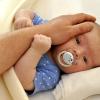CYBERMED LIFE - ORGANIC & NATURAL LIVING
CYBERMED LIFE - ORGANIC & NATURAL LIVING
 Natural Birth Natural childbirth is childbirth without routine medical interventions, particularly anesthesia. Natural childbirth arose in opposition to the techno-medical model of childbirth that has recently gained popularity in industrialized societies. Natural childbirth attempts to minimize medical intervention, particularly the use of anesthetic medications and surgical interventions such as episiotomies, forceps and ventouse deliveries and caesarean sections. Natural childbirth may occur during a physician or midwife attended hospital birth, a midwife attended homebirth, or an unassisted birth. The term "natural childbirth" was coined by obstetrician Grantly Dick-Read upon publication of his book Natural Childbirth in the 1930s, which was followed by the 1942 Childbirth Without Fear.
Natural Birth Natural childbirth is childbirth without routine medical interventions, particularly anesthesia. Natural childbirth arose in opposition to the techno-medical model of childbirth that has recently gained popularity in industrialized societies. Natural childbirth attempts to minimize medical intervention, particularly the use of anesthetic medications and surgical interventions such as episiotomies, forceps and ventouse deliveries and caesarean sections. Natural childbirth may occur during a physician or midwife attended hospital birth, a midwife attended homebirth, or an unassisted birth. The term "natural childbirth" was coined by obstetrician Grantly Dick-Read upon publication of his book Natural Childbirth in the 1930s, which was followed by the 1942 Childbirth Without Fear.
Historically, most women gave birth at home without emergency medical care available. The "natural" rate of maternal mortality—meaning without surgical or pharmaceutical intervention—has been estimated at 1,500 per 100,000 births. In the United States circa 1900, before the introduction and improvement of modern medical technologies, there were about 700 maternal deaths per 100,000 births (.7%).
At the onset of the Industrial Revolution, giving birth at home became more difficult due to congested living spaces and dirty living conditions. This drove urban and lower class women to newly available hospitals, while wealthy and middle-class women continued to labor at home. In the early 1900s there was an increasing availability of hospitals, and more women began going into the hospital for labor and delivery. In the United States, the middle classes were especially receptive to the medicalization of childbirth, which promised a safer and less painful labor. The ability to birth without pain was part of the early feminist movement. The use of childbirth drugs began in 1847 when Scottish obstetrician James Young Simpson introduced chloroform as an anesthetic during labor, but only the most rich and powerful women (such as Queen Victoria) had access. In the late 1800s, feminists in the United States and United Kingdom began to demand drugs for pain relief during childbirth.
The term "natural childbirth" was coined by obstetrician Grantly Dick-Read upon publication of his book Natural Childbirth in the 1930s. In 1942 Grantly Dick-Read published Revelation of Childbirth (which was later retitled Childbirth without Fear), advocating natural childbirth, which became an international bestseller. The Lamaze method of natural childbirth gained popularity in the United States after Marjorie Karmel wrote about her experiences in her 1959 book Thank You, Dr. Lamaze, and with the formation of the American Society for Psychoprophylaxis in Obstetrics (currently Lamaze International) by Marjorie Karmel and Elisabeth Bing. Later, physicians Michel Odent and Frederick Leboyer and midwives such as Ina May Gaskin promoted birthing centers, water birth, and homebirth as alternatives to the hospital model. The Bradley method of natural childbirth (also known as "husband-coached childbirth"), a method of natural childbirth developed in 1947 by Robert A. Bradley, M.D., was popularized by his book Husband-Coached Childbirth, first published in 1965.